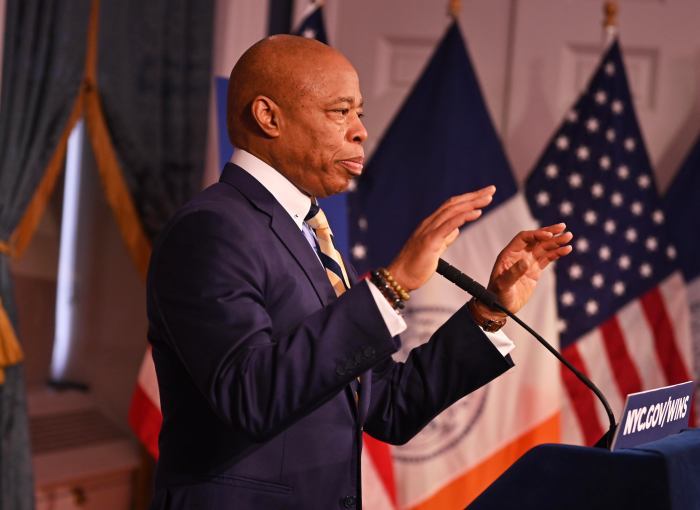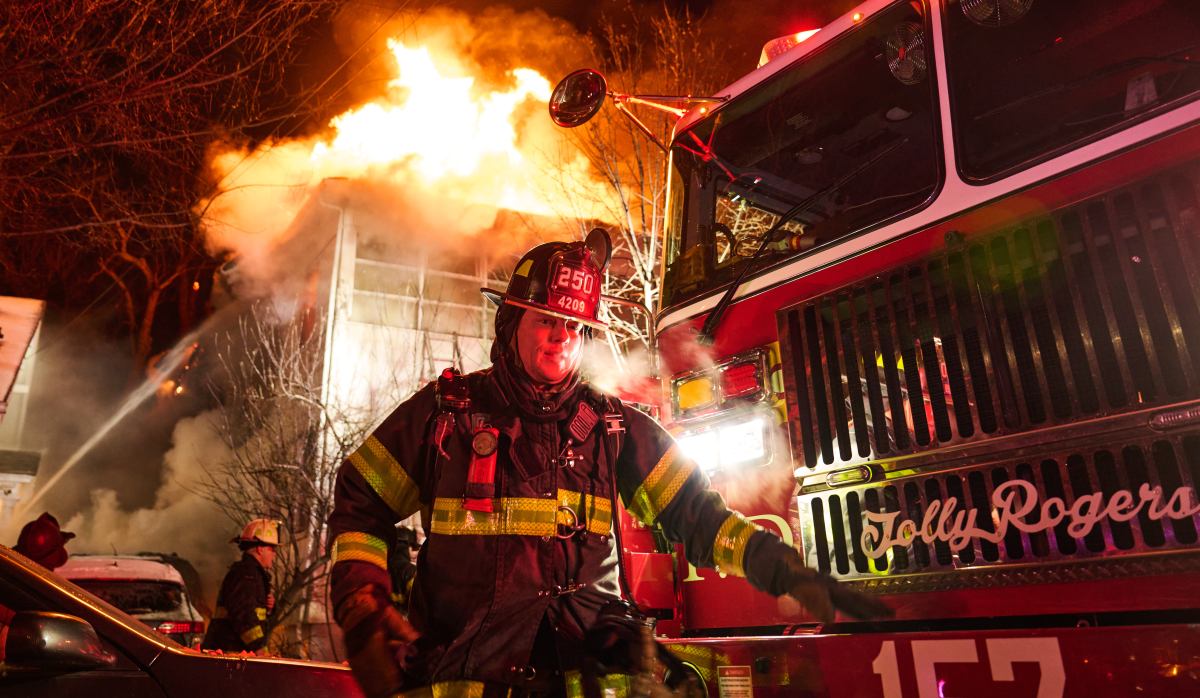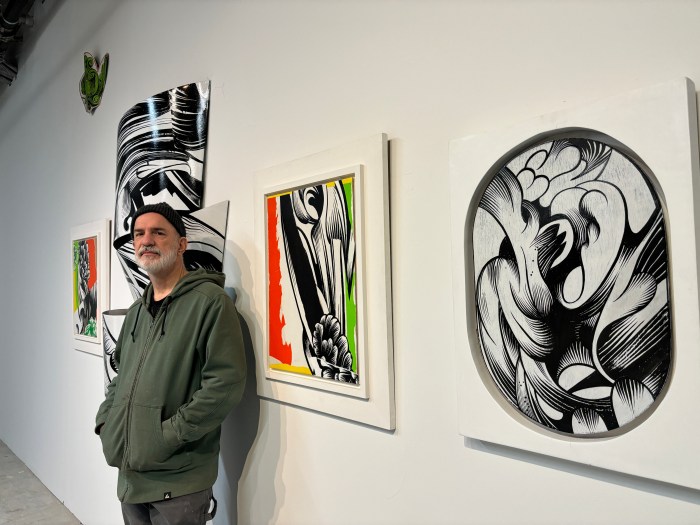
As one of only two Latinas in the City Council, Carlina Rivera is among a growing number of women taking up the charge to increase inclusivity and fight for balanced representation in city politics.
Rivera, the child of Puerto Rican parents who secured a win in District 2 with 82.86 percent of votes on Tuesday, said that as a woman of color, she had to deal with added challenges during her campaign.
“First of all, when they see you, they are going to question your education,” Rivera said, recounting tales from the campaign trail between sips of her latté at Cornerstone Café in the East Village. “We have to be two, three, four times more qualified than our male counterparts.”
Overall, New York City ranks 24th among 200 major cities in the country when it comes to the diversity of female leadership in city government, according to Brenda Choresi Carter, director of the Reflective Democracy Campaign. Women of color in the city have been able to overcome several political and economic barriers, making up a majority of female representation in City Council.
The District 2 seat — covering the East Village, Gramercy Park, Kips Bay and parts of the Lower East Side — was previously held by Rosie Méndez, but she reached her term limit in 2017. Formerly her legislative director, Rivera lauded Méndez as her mentor and a “tremendously independent woman,” stressing the importance of role models in government.
“Having a woman to look up to, to see her doing something really well and owning it, is really, really important,” Rivera said. “There is nothing like seeing a woman who looks like you, someone who can talk to you about being a woman in a man’s world.”
City Councilwoman Vanessa Gibson, who has served Bronx’s District 16 for the past four years, also knows about the importance of strong leadership role models. Since her election in 2013, Gibson became the first woman of color to chair the council’s Department of Public Safety, where she regularly works with the NYPD and the Mayor’s Office of Criminal Justice. She was re-elected to her City Council seat with a whopping 96.19 percent of votes on Tuesday.
“Certainly while the first, I should not be last,” she said, stressing the importance of persevering in the face of discrimination.
Gibson pointed to her mentor, former Assemb. Aurelia Greene, for giving her the opportunity to make a career in city politics.
“I’m African-American. I’m young. I’m just out of college. How do I convince a 100,000 people to believe me?” she said, recalling how she ran for and won Greene’s seat in 2013 while simultaneously earning a degree from Baruch College. She said she couldn’t have done it without the money, endorsements and resources that Greene gave her.
“She always told me ‘You can do it, I believe in you.’ She was my validator,” Gibson added.
Studies by the Center of American Women and Politics found that the primary motivation for women to run for office is to affect public policy change, whereas for men, the drive comes from wanting to hold elected office, according to Kelly Dittmar, professor of Political Science at Rutgers University.
“It’s not a choice. It’s what they are doing because they are facing those challenges,” she said. “Their motivation is natural.”
Rivera’s drive to champion causes like affordable housing, wealth inequality and small businesses also stems from her own experience, which has fueled her campaign platform.
“These are issues I have lived with every day,” said Rivera, whose husband owns a small business. “I’m thinking, if I can barely do this, what about the woman raising three kids on her own?”
There are barriers, however, that can keep women of color from attaining political success, Carter said. First, the network of gatekeepers in various political parties and organizations offering endorsement “tends to be an old boys’ club.” Second, it is difficult to gather the economic resources that are required to run for and hold office.
“New York City’s better numbers for traditionally underrepresented groups suggest that something from those two barriers is different,” she added.
In a city with a Democratic stronghold, activists and party leaders are more likely to value diversity in an explicit way, according to Jennifer Lawless, a professor at American University.
“They are more likely than Republicans to say that people of color and women are important,” she said. “They are able to diversify on multiple dimensions.”
Following Tuesday’s election, nine of the City Council’s 51 seats are now occupied by women of color, and two are held by white women.
Despite the relatively high representation from women of color, the council’s female representation is only 21.5 percent. The number of women in the City Council has also decreased from 18 in 2009 to 11 in 2017. If Councilwoman Elizabeth Crowley holds onto her contested seat, the number would rise to 12.
As a lifelong resident of the Lower East Side who was raised by a single mother, Rivera believes that what pushed her to finally decide to run was the support from her community, her mentors, and her friends and family.
After her decision was finalized, one of the organizations she sought help from was Women of Color for Progress, a grassroots effort that seeks to connect women from diverse communities to political networks, resources and training.
“They say that the best way to walk through a minefield is in someone else’s steps. And if they point it out to you, it’s much more likely that you will make it out alive,” co-founder Aliya Allen said.
Comprised of 10 founders who are involved in politics in different capacities, the organization aims to “help women of color serve as a voice, as a shifting tool, in the white male-dominated political arena,” Allen added.
Women of Color for Progress is in the process of recruiting women who are interested in running for office and connecting them to initiatives like 21 in ’21, which aims to have at least 21 women in the City Council by 2021.
Founded by several council members, 21 in ’21 looks to capitalize on the fact that 37 City Council members will reach their term limits in 2021. This will offer an opportunity to install more women in elected offices, as they will be vying for open seats, according to executive director Moira McDermott.
The initiative is in its early stages, but organizers hope to employ educational and training materials, along with one-on-one candidate development, to prepare women for political candidacy in four years, she added.
“We are not necessarily looking for viability at this time,” McDermott said about potential candidates. “It’s more about being able to make them viable.”
Rivera believes that one of her primary roles as a newly elected councilwoman is to identify the rising stars in the community and lift up women of color in the same way she was.
“I’m in awe of how much they can get done,” she said of her contemporaries. “That’s so classic. Women, we do everything. Picking up the kids, groceries, we’re working, we’re going to school, we’re taking care of our parents.
We have been doing that for a long, long time and it’s finally time we deserve more spots in leadership.”



































